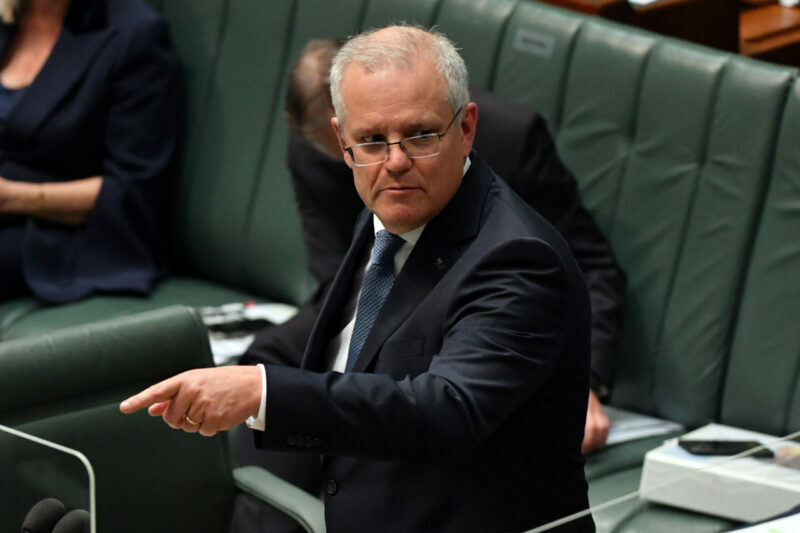In spite of the Liberal party’s small-government rhetoric, Prime Minister Scott Morrison is running the most expensive government in recent memory with departmental expenses outstripping both tax revenue and Australia’s GDP; and dwarfing Labor government. Callum Foote investigates.
The Liberal party manifesto claims “we work towards a lean government that minimises interference in our daily lives”. “We are the party of small government” is the pitch; “Labor stands for big spending”, “we keep government out of people’s lives”.
That’s the sales spiel. It’s not true.
The eight years of Coalition government have been the most expensive in history. And while they have deregulated for their friends – relaxing insolvency laws and directors’ disclosure duties – they have regulated their perceived foes such as proxy advisers to the super funds and litigation funders who assume, de facto, the duties of the corporate regulator.
One might be surprised to learn that career bureaucrat Scott Morrison is overseeing the most expensive government in recent memory, which is approximately 34% more expensive than Rudd’s 2013 government when adjusting for inflation, according to Federal budget papers.
Departmental expenses on the rise
The cost of running the government, paying for salaries, rent, pens and paper is captured in the Federal Budget as departmental expenses.
Departmental expenses exclude what are known as administered expenses, which are payments made on behalf of the government by government agencies such as social benefits and grants to the States.
Departmental expenses also exclude investments made by departments, to represent the true cost to run these entities.
Total departmental expenses are tipped to hit $100 billion in 2020-21, according to the last budget, which is up a staggering 90% from 2010-11, when the federal government cost just $52.4 billion to run.
Adjusting for inflation, this is a 60% increase.
Since Morrison took office in 2018, the cost of government has grown by over a third or $25 billion. From $74 billion to $100 billion as predicted in the latest budget.
In fact, despite decrying the “the stifling structures of Labor’s corporate state”, the Liberal party’s Federal government exceeds all comparative metrics compared to tax revenue or GDP.
During the 2007 to 2013 Rudd-Gillard-Rudd government the cost of government increased on average just 2.5% annually.
When Rudd entered government in 2007 the total departmental expenses were approximately $50 billion. 6 years later, when Labor lost office in 2013-14 departmental expenses had risen to $58 billion.
The Coalition government, on the other hand, has seen its departmental expenses increase 9% year on year since taking office in 2013, having increased from $58 billion to $100 billion in 8 years.
Independent Senator Rex Patrick says that “The Prime Minister clearly has a spending addiction that’s being masked by spin, talking up “lean Government” in contrast to the facts just reinforces the public’s perception that Mr Morrison is one for flexible truth.”
Patrick also draws attention to the staffing and public service skill levels which this governments is overseeing:
“The numbers are very alarming, particularly noting that Government civilian staffing had either been in decline or capped through much of the period. Mr Morrison is clearly presiding over gross internal Department inefficiency supplemented by a highly expensive contracting/consulting workforce”.
“Sadly the Government has run the public service down to the point where it no longer has the skills and experience to carry out essential functions. The big four consulting firms must be rubbing their hands together.”
Cost of government compared to taxation revenue
The growth in the cost of government has almost doubled the growth in Federal government taxation revenue which has increased by just 55% over the past decade, from $288m to $448m.
Both of these metrics outstrip Australian GDP growth, which has grown just 26% over the past decade according to the Australian Bureau of Statistics.
Federal government taxation revenue has almost doubled growth in GDP, while the cost of government has exceeded the grown in GDP by 3.5 times.
While the Liberal party manifesto decries “the punishing disincentives of burdensome taxes”, as a percentage of GDP, federal government taxation has increased from 18% in 2010 to 23% in 2019-20, the latest year for which the ABS has provided Government taxation revenue data.
Editor’s Note: the cost of government has increased due to the Pandemic, although the rise was underway before Covid. The decision to outsource the work of bureaucracy to consultants such as the Big Four consulting firms has seen an explosion in government contract payments.
Callum Foote was a reporter for Michael West Media for four years.

